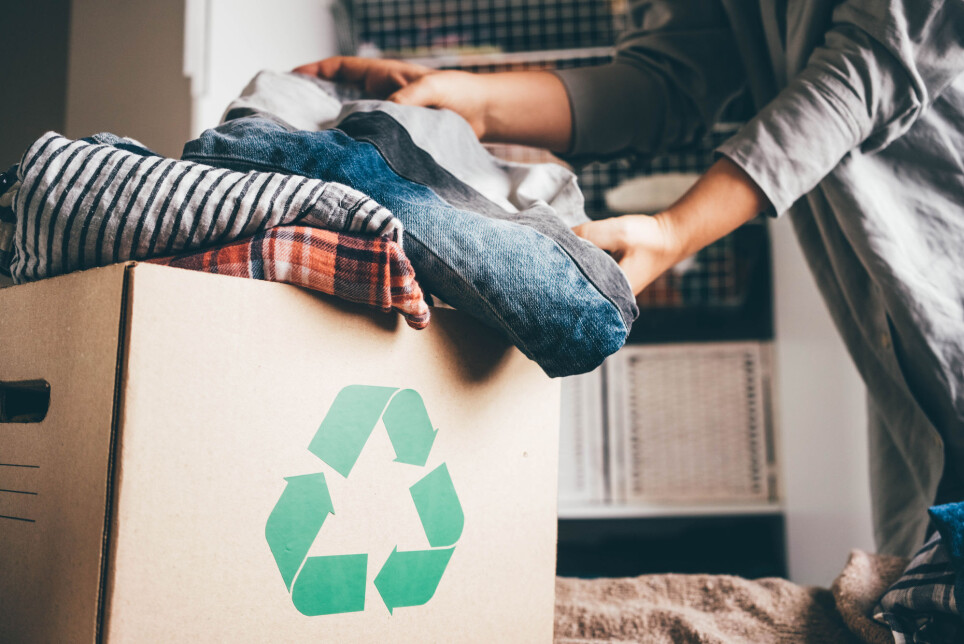THIS ARTICLE/PRESS RELEASE IS PAID FOR AND PRESENTED BY Oslo Metropolitan University - read more

The most effective environmental measure is rarely ever used
Sustainable consumption should not be reduced to reuse and recycling, according to SIFO researchers.
Imagine that your phone is getting progressively slower. Rather than you buying a new phone, the retailer offers you new software and a new battery, making the phone in your hand almost new again. Or that your sofa has become stained and has worn down pillows. What if the retailer offers to repair it and to use a fabric of your choice?
Instead of dismantling these products for recycling, we increase the lifespan of the product.
Extending product life is the most effective measure
“It is good climate policy to increase the lifespan of most consumer durables,” according to SIFO researcher Nina Heidenstrøm.
“Why don’t we use the most effective approach?” comments her research colleague Pål Strandbakken.
Together with colleagues in the LASTING project, they have published a report on how product lifespans are described and conceptualised in Norwegian and European policy documents and in consumer and product policies.
Typically, when we discuss sustainable consumption, we quickly introduce recycling and reuse. The circular economy is a concept that has been much used lately. Quite recently, the Norwegian government launched a strategy for a green and circular economy.
But prolonged product life is only rarely proposed as an environmental solution in the debates. Product life tends to disappear, according to the researchers.
Reduce consumption and slow down the speed of the economy
“If a white goods retailer leases instead of selling a refrigerator to you, and takes full responsibility for maintenance and repair, you would probably keep it longer than if you owned it and it ceased to function,” Strandbakken says.
Longer product life would reduce consumption, reduce indirect energy use from production, reduce emissions from transport and generally contribute to slowing down the economy.
Repair and new business models
Heidenstrøm points to a dilemma here: “Our economy is based on the frequent purchase of new consumer products, and reduced consumption is hard to argue for politically. We will have to develop other means and approaches within our present economic system.”
Part of the solution would be that businesses switch to alternative, circular business models; like different forms of leasing.
Manufacturers should offer generous warranties combined with cheap quality repair. A product might have a software upgrade or new components, or it should be possible to expand and to replace modules when needed. A number of products will have to designed differently in the future.
Product longevity in political party programmes
To what extent has product durability become part of Norwegian party politics? The team has analysed pre-election party programs of Arbeiderpartiet (the social democratic party), Høyre (the conservative party), SV (the socialist party) and Venstre (the liberal party) from 2001 until the present plus the most recent programs from FrP (the progressive party) and Mdg (the green party).
The concept does not appear until 2017, in the aftermath of the 2015 EU action plan on a circular economy. SV writes most about the theme, followed by Arbeiderpartiet and Venstre. Høyre says very little about consumption at all, at least in connection with the environment. Mdg has a high focus on consumption and product lifespans in its most recent program.
“Product lifespans are closely connected to the consumers and consumer responsibility. This indicates the context in which politicians tend to place it,” Heidenstrøm says.
“This is problematic because politics generally holds a very limited understanding of the consumer. A common assumption is that people will choose to do the right thing if they are provided with sufficient information. It is not that easy,” she adds.
Why do we replace products?
In addition, we might have to reconsider why we replace our products. How come that we just 'have to' have the newest model? This is about social lifespans.
“We do not only throw things away because they’re worn out, but we also get rid of products for other reasons as well,” Heidenstrøm says.
“Like when things go out of fashion, or we want this year’s model. We replace things when we move, the family composition changes, we undergo bodily changes or just grow older.”
“Politics shies away from debates about social norms; what is considered acceptable to have and to wear? How do we influence social norms on consumption levels and patterns? This is very hard; it is always easier to address the technical lifespans.”
Reuse might lead to equally high levels of consumption
All the talk about reuse recently, indicate that it is a trend. This might be environmentally beneficial, according to Heidenstrøm.
“When people accept reuse, and when buying second hand products become acceptable, we have made a positive change to consumption standards. Yet, second hand shopping might also justify the acquisition of new products. For example, 'I am going to sell this phone on e-bay, in order to buy the new model'. Selling things or giving them away give a cleaner conscience when buying new stuff. This perverts the effect and works against consumption reduction,” she says.
Reference:
Nina Heidenstrøm et.al.: Product lifetime in European and Norwegian policies. Sifo Project Report 11-2021.
———
Read the Norwegian version of this article at forskning.no
See more content from OsloMet:
-
"Norwegians practice a friendship version of a ‘one-night stand'"
-
"We need to talk about how we assess teacher students"
-
Cannabis use in Norway has increased: “Not everyone needs moral lectures or worried looks"
-
Many children with ADHD do not thrive at school
-
An out-of-control race: Why we fear artificial intelligence
-
One in four seniors feels digitally discriminated against





































